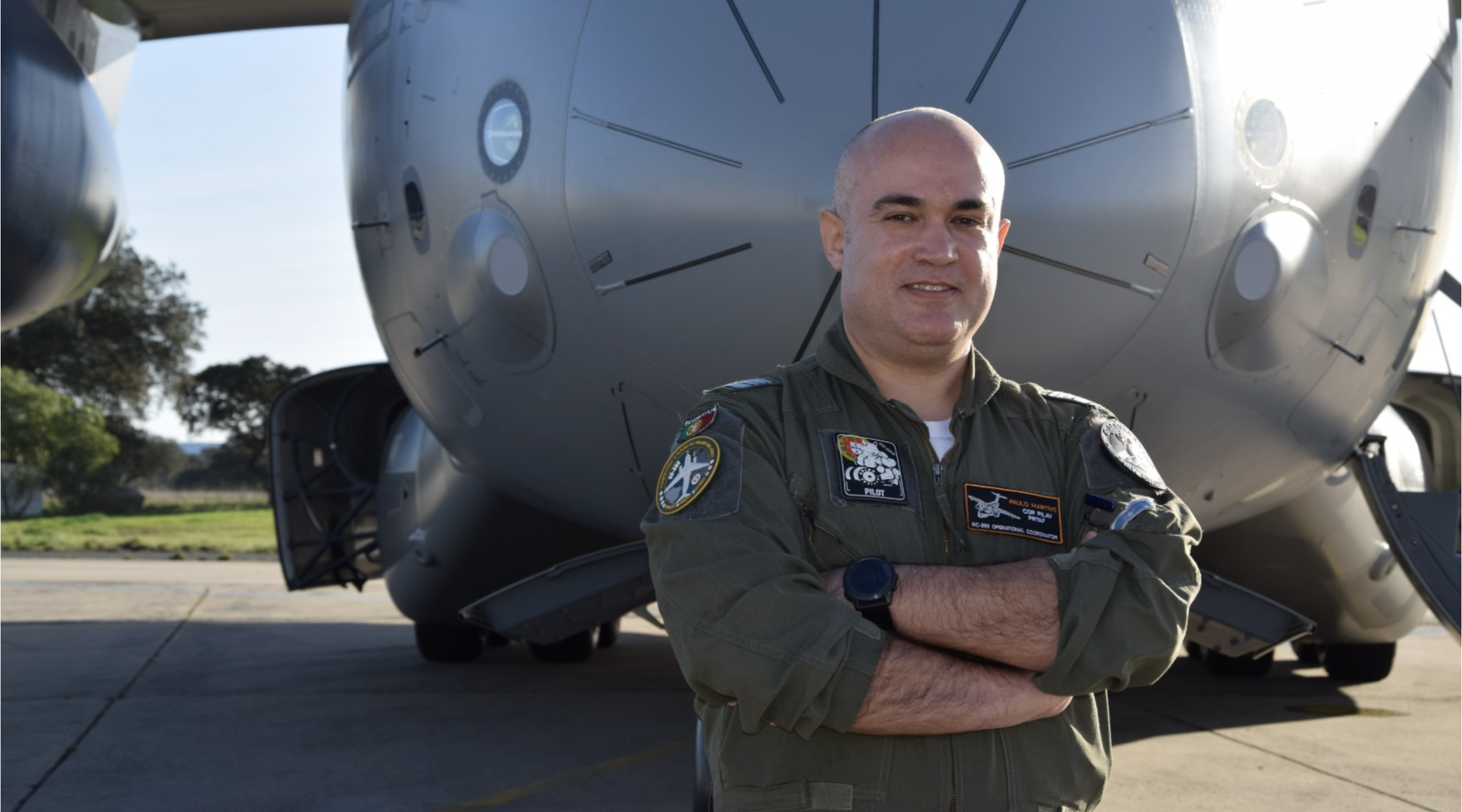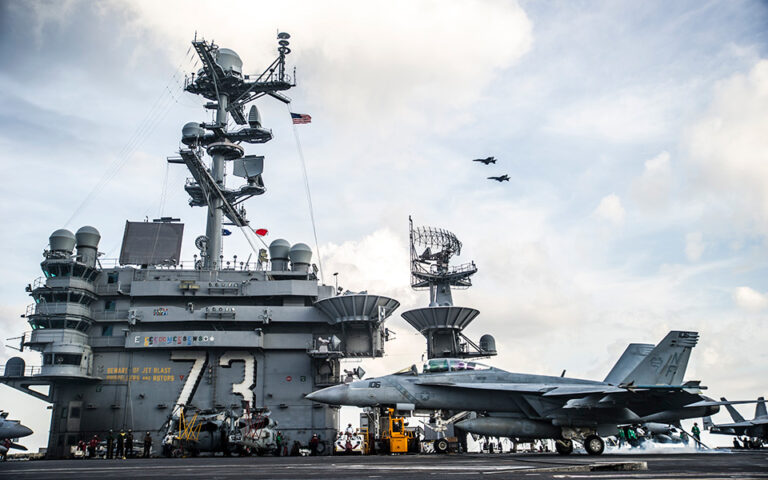
Date 24.3.2025
The integration of the KC-390 has revolutionized the Portuguese Air Force (PRTAF), enhancing its versatility, reach, and operational capabilities. Paulo Martins, Coronel Piloto Aviador and Operational Coordinator for the KC-390, provides an in-depth perspective on the aircraft’s transformative impact, the challenges faced during its adoption, and its strategic importance for Portugal and NATO.

Paulo Martins, Coronel Piloto Aviador and Operational Coordinator for the KC-390
How has the integration of the KC-390 impacted the operational capabilities of the Portuguese Air Force?
The KC-390 has provided the PRTAF with a modern, flexible, and capable platform that significantly enhances operational effectiveness both nationally and internationally. This aircraft has not only improved PRTAF’s mission readiness but also strengthened its ability to respond to a wide range of challenges and opportunities.
The KC-390 is a multi-mission aircraft that excels in a variety of operations, including troop and cargo transport, medical evacuations, search and rescue missions, air-to-air refueling, and firefighting. This exceptional versatility enables the PRTAF to meet diverse mission requirements effectively.
With its intercontinental range, the KC-390 has enhanced Portugal’s ability to participate in international military operations and exercises. Its capacity to carry heavier payloads and travel at faster speeds compared to legacy aircraft like the C-130 Hercules has further streamlined logistical operations, providing greater efficiency for both national and international missions.
The acquisition of the KC-390 also includes advanced technology and systems that have modernized the PRTAF. The integration process involved comprehensive training programs for new crew members and technicians, equipping the Air Force with enhanced operational and technical expertise.
Notable missions include the KC-390’s first operational flight on October 18, 2023, from Brazil to Portugal, landing at Beja Air Base (AB11). Following its arrival, the aircraft was immediately deployed to transport military personnel and cargo for the multinational exercise Ocean Sky 2023 in the Canary Islands and for the Helicopter Tactics Instructor Course in Hungary. Additionally, it transported a UH-60 Black Hawk helicopter from the United States to Portugal, demonstrating its exceptional cargo capacity and intercontinental reach.
Since its introduction, the KC-390 has been extensively utilized for transporting personnel, equipment, and supplies, conducting medical evacuations between Portuguese islands and the mainland, and supporting VIP transport. Its ability to operate on short and unpaved runways makes it an indispensable asset for logistical support in a wide array of operations.



Could you elaborate on the training programs provided by the Brazilian Air Force, and how they have prepared your crews for KC-390 operations?
Training was a cornerstone of the successful transition to the KC-390, with a strong collaboration between the PRTAF and the Brazilian Air Force. This partnership ensured that the integration process was smooth and effective, significantly enhancing PRTAF’s operational capabilities.
The training began with two pilots and two loadmasters who underwent intensive preparation to understand the requirements of the PRTAF and to develop the necessary skills for operating the KC-390.
A comprehensive theoretical program, developed by the Brazilian Air Force, included classroom sessions on aircraft systems, avionics, and operational procedures. Practical training covered basic flight operations and all aspects of the KC-390’s aerologistic functions, followed by advanced scenarios such as paratroop and cargo airdrops.
Further training, provided by Embraer, incorporated computer-based modules, cockpit procedures, full mission simulations, basic flight operations, and aero-logistic supervision. This ensured all crew members were proficient in both routine and advanced operations of the KC-390.
The transition presented several challenges, including resistance to change from legacy systems, the steep learning curve associated with the KC-390’s advanced avionics, and the effort required to harmonize operational procedures between Portuguese and Brazilian forces. Maintenance crews faced the additional task of learning to handle advanced systems and performing effective maintenance. Despite these obstacles, the training programs were successful, ensuring a seamless transition and a significant enhancement in PRTAF’s readiness.



How does the KC-390 contribute to Portugal’s defense strategy and NATO commitments?
The KC-390 is a pivotal element of Portugal’s defense strategy, enabling the country to fulfill its national and NATO commitments effectively. Its wide range of capabilities allows Portugal to contribute to NATO operations and humanitarian missions with exceptional flexibility and efficiency.
This aircraft’s ability to perform troop and cargo transport, medical evacuation, search and rescue, firefighting, and air-to-air refueling makes it invaluable in diverse operational scenarios. Its capability to operate from unpaved and temporary runways provides additional versatility, which is critical for NATO’s varied environments.
The KC-390’s 26-ton payload capacity enables it to transport heavier and larger cargo compared to its predecessor, the C-130H. Equipped with advanced avionics and an Electronic Warfare (EW) suite provided by Elbit Systems, the KC-390 enhances survivability and situational awareness in challenging conditions. Its interoperability with NATO forces, validated through joint exercises and operations, ensures seamless integration and collective defense capabilities.
By strengthening PRTAF’s operational capacity, the KC-390 significantly bolsters Portugal’s role within NATO, enhancing collective security and fostering closer cooperation among allied nations.
What are the future plans for expanding the use of the KC-390 within your force?
The PRTAF’s modernization strategy, known as “Força Aérea 5.3,” focuses on aligning its capabilities with national defense priorities and NATO commitments. The KC-390 is a central component of this strategy, with plans to further expand its operational roles.
Future initiatives include the seamless integration of the KC-390 with 5th-generation aircraft, enhancing interoperability and efficiency within modern air forces. The aircraft’s role in critical support functions, such as air-to-air refueling, is set to grow, further solidifying its importance in international missions.
Continuous upgrades to the KC-390 are planned, including advancements in avionics, mission systems, and maintenance processes. These improvements will ensure the aircraft remains at the forefront of aerospace technology, maintaining PRTAF’s operational edge and strengthening Portugal’s contributions to NATO’s collective defense framework.
Interviewed and edited: Katerina Urbanova
Photo Credit: Portuguese Air Force (PRTAF)





